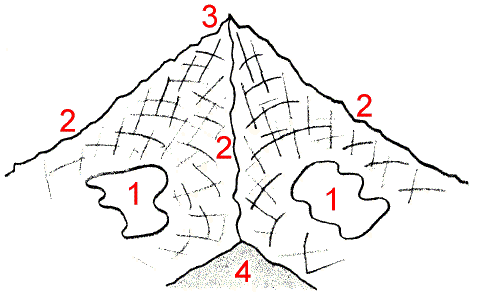Corries are also known as “Cirques” and “Cwms”. They occur most often on the north or east side of a mountain slope. They began to form at the beginning of the Ice Age when falling snow would be compressed and turned into ice.
The glacier produced by this process would move slowly downhill carrying debris along the bottom of it. This debris is called moraine and is plucked from the back wall of the glacier, or it is created by a “freeze-thaw action”, causing rock to crumble off the back wall.
The moraine causes abrasion at the bottom of the hollow and so it deepens. A Rock Lip is left when the rate of erosion decreases. Moraine builds up on the lip as it is deposited at the end of the glacier. When the ice age finishes, the ice melts and a lake is formed.

1. Corrie Lake / Tarn
2. Arête – the ridge produced by the backs of two corries meeting
3. Pyramidal Peak – if three or more corries meet back to back, a pyramidal peak will be produced.
4. A cross-section through the Arête
